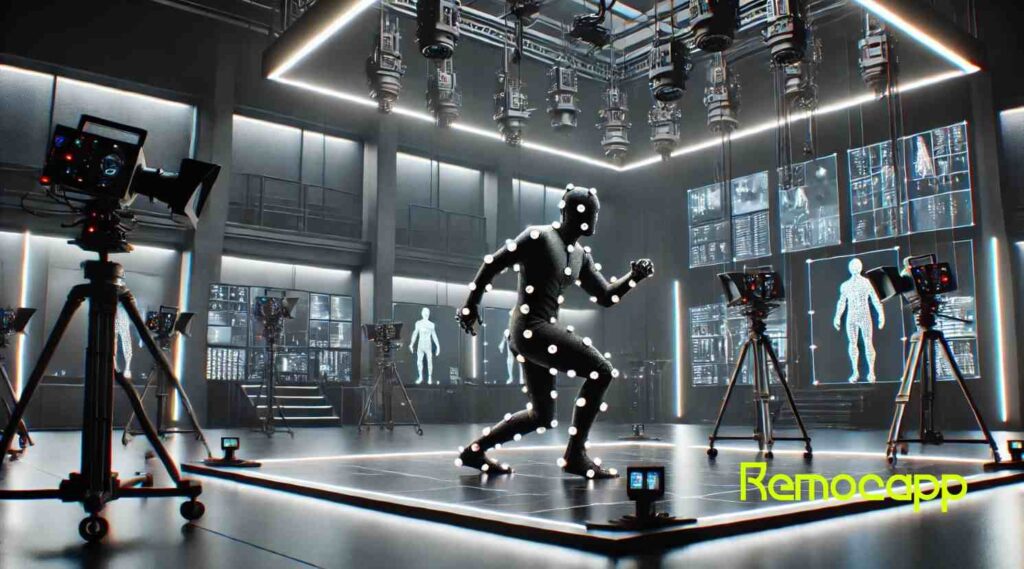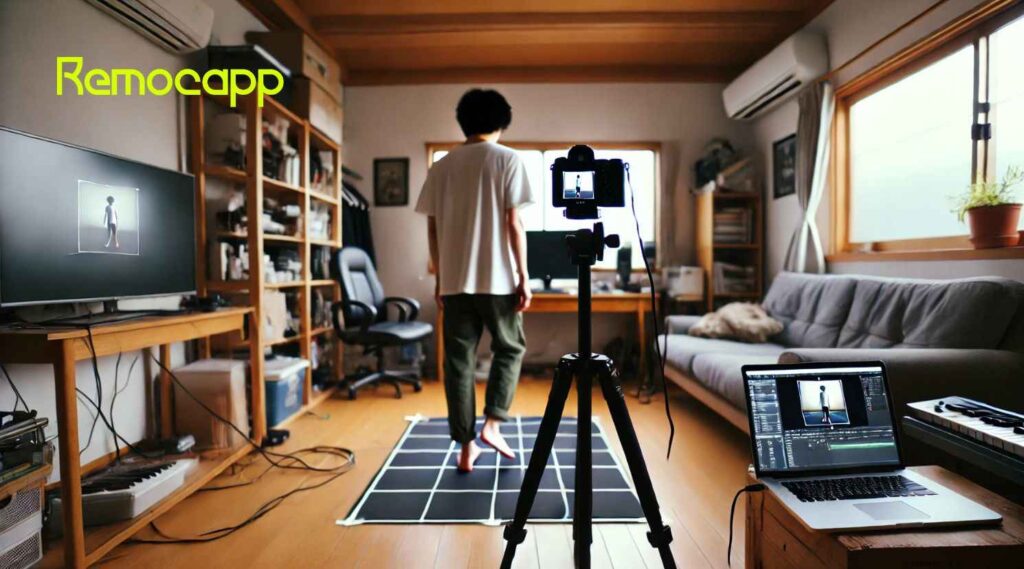The Secret Behind Lifelike Animations: How Motion Capture Cameras Work
Writer
Alex LearyDate
29 Dec 2024
Share article

Ever wondered how lifelike characters in video games or movies manage to move so realistically? Well, it’s all thanks to motion capture, or mocap. This process takes real-world movements and turns them into digital animations that make characters seem alive. At the core of this process are motion capture cameras, which capture every tiny movement with incredible precision. But here’s the thing: traditional mocap cameras are expensive and often out of reach for smaller creators. That’s where solutions like Remocapp come in, offering a more affordable way to do motion capture with regular cameras.
Motion Capture Cameras: More Than Just Cameras
Motion capture cameras are specially designed to track movement in three-dimensional space. They aren’t your everyday cameras. These cameras use infrared light, high frame rates, and are built to synchronize with other cameras to track every move in perfect detail. Sounds amazing, right? But all this advanced technology comes at a steep price, which is why motion capture has often been reserved for big-budget movies and video game studios.
Breaking Down the Tech: How Mocap Cameras Do Their Thing
So how do these cameras actually work? Motion capture cameras don’t just record video. They track the movement of objects—or in this case, people—frame by frame. There are different systems: some use markers (tiny reflective dots on the actor’s body), while others use AI to track movement without any markers. These cameras capture the data, which is then turned into digital animations. Key factors like camera resolution, frame rates, and syncing between multiple cameras all play a part in making sure the motion is captured smoothly and accurately.

The Pricey World of Specialized Mocap Cameras
Let’s talk about the high-end stuff. The motion capture cameras used in Hollywood are something else entirely. These cameras use infrared sensors to capture movements from all angles, often at incredibly high resolutions. Sounds like a dream, right? But here’s the catch: they cost a fortune. Setting up a motion capture studio with this type of gear can cost tens of thousands of dollars. On top of that, you need a controlled environment, a lot of technical calibration, and a skilled team to manage the setup.
AI to the Rescue: Motion Capture Without the Hassle
AI is here to flip the script. Instead of relying on expensive hardware, AI-powered motion capture systems like Remocapp let you use regular cameras. Yep, Webcam Motion Capture is a thing! With smart algorithms and real-time processing, AI tracks your movements without needing any special suits or markers.
How AI-Powered Motion Capture Cameras Work Their Magic
Here’s a quick rundown on how Remocapp works its magic:
- Cost-Effective: Say goodbye to the hefty bills of traditional setups.
- Markerless Tracking: No need for those awkward suits or dots all over your body.
- Real-Time Processing: Movements are captured and turned into data instantly—no waiting around.
- Simple Camera Setups: All you need is 2 to 8 basic cameras, and Webcam Motion Capture works too.
Unlock the Power of Webcam Motion Capture!
You don’t need expensive equipment to create high-quality motion capture. Learn how Webcam Motion Capture can revolutionize your projects and start creating stunning animations today!

Why AI Motion Capture Is a Game-Changer
AI-powered motion capture isn’t just about saving money—it’s about making motion capture possible for everyone. Whether you’re a seasoned animator or someone just starting out, AI systems like Remocapp give you the tools to create incredible digital animations without needing a big budget. Here’s why AI mocap is so revolutionary:
- Affordable: Forget spending a fortune on expensive cameras and equipment.
- Flexible: Works in small spaces, and doesn’t require a special studio.
- Portable: All you need is a laptop and a few cameras to get going.
- Accessible: Perfect for indie creators, small studios, or anyone with a creative idea they want to bring to life.
Comparing AI Mocap to Traditional Motion Capture
Traditional motion capture setups involve high-tech cameras that require precise calibration, markers, and often a controlled environment. These setups are complex, costly, and require a lot of space. In contrast, AI-powered motion capture, like Remocapp, works with everyday cameras and doesn’t require markers or suits. It’s simpler, more affordable, and easier to set up. While traditional mocap may still be the best choice for big-budget studios, AI mocap offers a practical and accessible alternative for smaller creators.
The Future of Motion Capture Cameras
As AI technology continues to improve, the difference between traditional motion capture cameras and AI systems is shrinking. In the near future, we can expect even more advancements, such as better tracking accuracy, direct integration with animation software, and compatibility with a wider range of devices. Remocapp is already at the forefront of these changes, proving that high-quality motion capture doesn’t have to come with a Hollywood-sized price tag.
Ready to Dive Into the World of Motion Capture?
Discover how AI-powered motion capture can transform your projects, no matter your budget. Read more about Motion Capture Cameras and Their Advantages and see how it can elevate your creative work today!
Conclusion: Smarter Motion Capture for Everyone
Motion capture cameras have always been essential for creating high-quality digital content, but their cost has been a major obstacle for many creators. Thanks to AI solutions like Remocapp, motion capture is no longer a luxury—it’s a tool that anyone can use. Whether you’re working on a game, an animated project, or just experimenting with digital art, Remocapp makes it easy and affordable to bring your ideas to life.
Ready to start creating? Visit Remocapp and see how easy it is to bring your motion capture ideas to life. Whether you’re an indie animator or part of a small studio, Remocapp is the solution you’ve been waiting for.
Frequently Asked Questions (FAQ)
Motion capture (mocap) records real-world movement and turns it into digital animation for games, movies, and VR.
Mocap cameras track movements in 3D space using infrared light and fast frame rates, then convert the data into animation.
Yes! With AI-powered solutions like Remocapp, you can use regular cameras, even webcams, to capture motion.
Simply sign up on the Remocapp website, and you’ll be ready to start capturing motion with basic cameras.
0Comments
Participate in the discussion around this article
Leave your comment
Write your opinion or questions about this article



